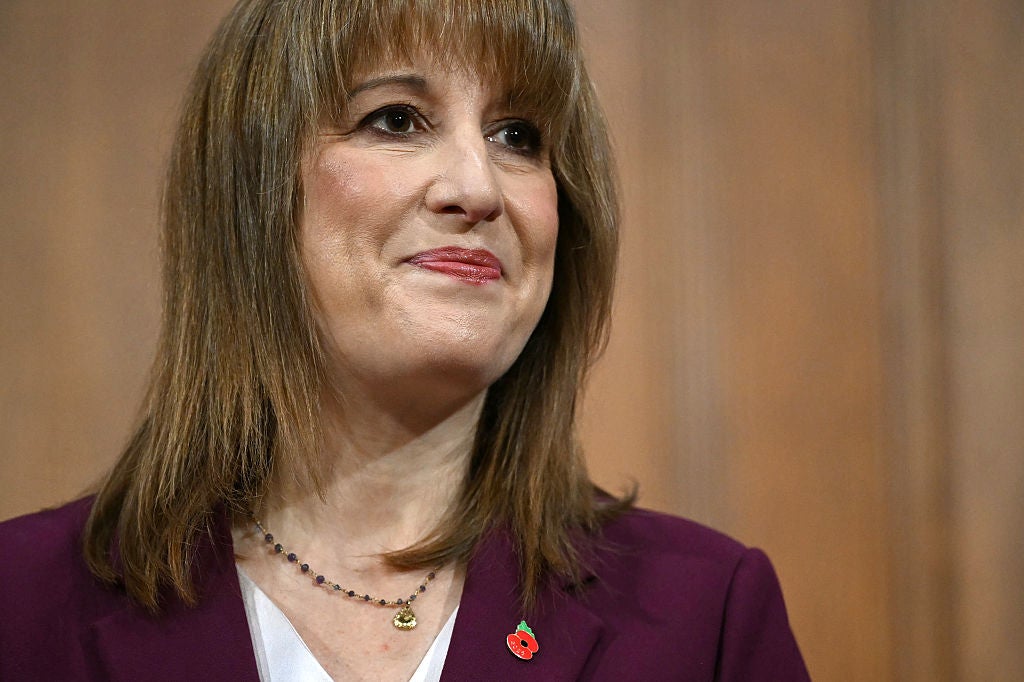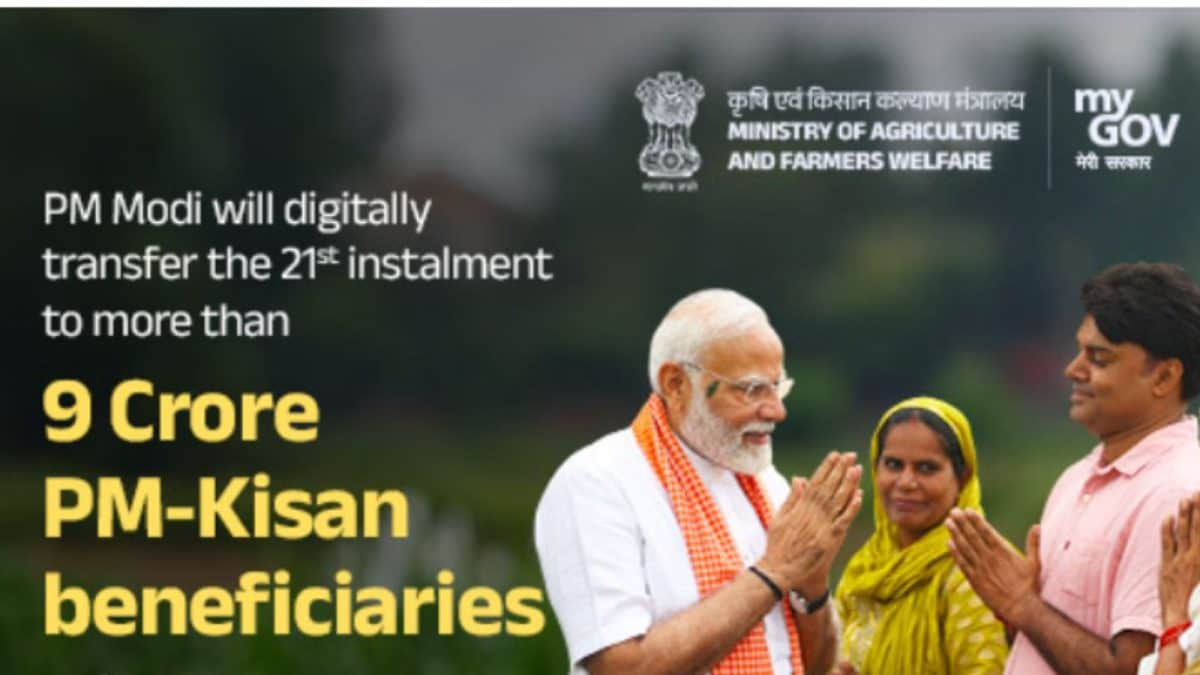Business
‘Pawn in trade negotiation’: China refuses to buy US soybeans; Donald Trump admin plans support for farmers – The Times of India

American farmers are looking at losing billions of dollars as Chinese importers have refused to buy US soybeans due to tensions between the two nations. To ease the blow, US treasury secretary Scott Bessent announced that the government will be rolling out new support measures for the farming sector.Bessent told CNBC that the federal government stands behind the farming community, which backed President Donald Trump in the 2024 election. “We’ve got their backs,” he said.“It’s unfortunate that Chinese leadership has decided to use the American farmers, soybean farmers in particular, as a hostage or pawn in the trade negotiations,” Bessent told Reuters.Trump on Wednesday said that soybeans would be a major topic of discussion when he meets Chinese President Xi Jinping in four weeks.Bessent explained that buying American farm products is part of nearly every recent US trade deal. “So we’re going to see other countries substitute for China,” he said. However, despite efforts by the administration and the soybean industry, no other markets have come close to matching China’s usual purchase volumes. A record harvest has also added pressure on prices.Bessent said he met Trump and Agriculture Secretary Brooke Rollins in the Oval Office on Wednesday. He asked farmers to expect “substantial support” to be announced on Tuesday, particularly for soybean growers. “On Tuesday, you’re going to see substantial support for the farmers, and we’re also going to be working with the Farm Credit Bureau to make sure that the farmers have what they need for next planting season,” he said.He added that an in-person meeting between Trump and Xi would help set the direction for future trade.“I think with President Trump’s leadership and his relationship – the respect party chair Xi has for him – that this round, which would be our fifth round of talks, should show a pretty big breakthrough,” Bessent said.
Business
UK inflation falls in pre-Budget boost Rachel Reeves

Inflation fell to 3.6 per cent in October, in a pre-Budget boost to Rachel Reeves – as well as to consumers and businesses.
The latest update from the Office for National Statistics (ONS) showed Consumer Prices Index (CPI) inflation dropping from September, when it surprisingly held at 3.8 per cent. That has led to most analysts to declare inflation has peaked across the UK.
It is the first time the rate of inflation has been at this level since June of this year – though just three months prior to that, in March it was as low as 2.6 per cent.
Some economists were expecting CPI to fall to as low as 3.5 per cent last month, and while that has not quite transpired, the downturn in price growth will be cause for relief for households and firms which have had to deal with constant price pressures and uncertainty this year.
The anticipated fall was “primarily based off last year’s big increase in energy prices dropping out of the annual comparison”, explained RSM UK’s chief economist Thomas Pugh, as well as continued slowdown in food price inflation.
It comes just a week before the chancellor, Rachel Reeves, presents the Budget in which it is expected a raft of tax increases will be unveiled.
On the falling figures, Ms Reeves said: “This fall in inflation is good news for households and businesses across the country, but I’m determined to do more to bring prices down. That’s why at the budget next week I will take the fair choices to deliver on the public’s priorities to cut NHS waiting lists, cut national debt and cut the cost of living.”
In disagreement, Sir Mel Stride MP, shadow chancellor of the exchequer, said: “Inflation has been above target every single month since Labour’s last Budget, leaving working people worse off. Labour’s last Budget hiked borrowing and taxes, stoking the inflation now hitting families. If Labour had any backbone, they would adopt our £47 billion savings plan and our Golden Economic Rule next week to ease inflationary pressures.”
Daisy Cooper, deputy leader for the Liberal Democrats added: “As the cost-of-living crisis rages on, the Chancellor mustn’t look this small gift horse in the mouth. Hitting people with a stealth tax at next week’s Budget would prolong the pain of higher taxes for much longer and unfairly pull poorer pensioners and low-income workers into paying tax for the first time.
Get a free fractional share worth up to £100.
Capital at risk.
Terms and conditions apply.
ADVERTISEMENT
Get a free fractional share worth up to £100.
Capital at risk.
Terms and conditions apply.
ADVERTISEMENT
“We Liberal Democrats are calling for emergency measures to slash people’s energy bills, save our high streets with a VAT cut for hospitality and boost growth in every corner of the UK – funded fairly by taxing the banks. The Chancellor must put households and high streets first and put an end to the most vulnerable from having to choose between heating and eating.”

The ONS have said that housing and household services made “the largest downward contribution” to the changing rate of CPI; while food and non-alcoholic beverages made the largest offsetting upward contribution.
Costs from health, communication and transport also dropped to contribute towards lowered inflation rates, while education and recreation and culture costs rose.
The continuing disinflation – plus recent data around rising joblessness – is likely to mean the Bank of England cut interest rates in December.
George Brown, senior economist at Schroders, said the situation beyond that remains cloudy and will depend very much on Rachel Reeves’ Budget. “Evidence inflation has peaked should tip the scales towards a December rate cut. But any further rate cuts will largely depend on the contents of the Chancellor’s red box. If VAT and green levies are eliminated from household energy bills, inflation could fall by as much as half a percentage point,” he said.
“But we remain concerned that broader price pressures will prove persistent. Wage growth is still well above a target-consistent pace, especially given repeatedly weak productivity.”
Lindsay James, strategist at Quilter, added that risks to the wider economy remain. “Although the direction of travel is improving, the wider economic backdrop remains fragile. Growth has been subdued all year, and the labour market is now cooling at a faster pace. The economy is clearly at a point of significant risk as we move towards 2026,” she said.
“Amidst rising unemployment , ill thought-out plans to target the tax relief on offer from salary sacrifice pensions not only store up greater problems for the future but also make workers even more expensive for companies who have already been hit hard by hikes to National Insurance and the minimum wage.”
The National Institute of Economic and Social Research (NIESR) also added that they expected two further rate cuts from the Bank of England next year, after inflation had “reached its peak”. “Unlike the announcements in the autumn 2024 budget, where a rise in business costs may have contributed to price increases in 2025, we think the upcoming budget is less likely to be inflationary,” added the NIESR in a statement.
“Falling inflation is welcome news and provides some relief for households heading into the winter months,” said Raisin UK’s co-founder Kevin Mountford. “While borrowing costs remain high, stabilising price pressures may pave the way for lower interest rates in the future, which could make mortgages and loans more affordable over time.”
Consumers were reminded that falling inflation, while a positive, wouldn’t be of help if they over-stretched themselves across the upcoming period – particularly with rates on borrowing still higher.
“No matter how healthy your finances, Christmas is an expensive time, so, while it’s good news that inflation is falling, many households will be spending more in the coming weeks on festive gifts, food and going out. The Black Friday sales can be very tempting, but – no matter how big the discount, it’s not a bargain if you have to take on unaffordable debt to buy it,” said Sarah Pennells, consumer finance specialist at Royal London.
Those with cash sat in accounts earning interest below the rate of inflation were urged to move their money elsewhere by Derek Sprawling, head of money at Spring.
“A fall in inflation offers some relief, but I urge savers not to become complacent. Even with a lower rate, billions remain in accounts paying below inflation, which remains relatively high. Savers should take this opportunity to review their savings options and switch to accounts that deliver returns above inflation, ensuring their money continues to grow in real terms,” he explained.
“Furthermore, with the Budget due, the outlook for interest rates is volatile regardless of the inflation rate. Moving your rainy-day savings to an account that gives a better return without restricting access provides better returns now and flexibility in the future.”
“There remains a significant gap between the best and worst rates available, so ensuring you’re regularly reviewing your interest rate and switching where possible is key,” added Shawbrook Bank’s Sally Conway.
Business
Target will report earnings before the bell. Here’s what to expect

The Target bullseye logo is seen on the outside of its store at the Lycoming Crossing Shopping Center.
Paul Weaver | Lightrocket | Getty Images
Target will report earnings on Wednesday morning as the big-box retailer gears up for the holiday season, gets ready for a new CEO and tries to snap a sales slump.
Here’s what Wall Street expects for the Minneapolis-based retailer’s fiscal third quarter, according to a survey of analysts by LSEG:
- Earnings per share: $1.72 expected
- Revenue: $25.32 billion expected
Target’s sales have been roughly stagnant for four years as it faces stiffer competition and has grown weaker in some of the areas that set it apart in the past, including its eye-catching merchandise, its well-organized stores, and its friendly and helpful customer service. Some customers also boycotted the retailer after it rolled back key diversity, equity and inclusion programs, a dynamic that Target blamed in part in May for its weaker sales results.
Target expects sales to decline again this year by a low single-digit percentage. It said adjusted earnings per share for the year, excluding gains from litigation settlements, will range from about $7 to $9. Most of that range would come in lower than last year, when adjusted earnings per share were $8.86.
Target announced in August that Michael Fiddelke, the company’s chief operating officer and former chief financial officer, would become its next CEO. He will succeed longtime Chief Executive Brian Cornell in February.
On an earnings call in August, the day of Target’s CEO announcement, Fiddelke laid out his three top priorities: reestablishing Target’s reputation as a retailer with stylish and unique items, providing a more consistent customer experience, and using technology more effectively to operate an efficient business.
He said he wouldn’t wait until stepping into the role to make changes.
Last month, Target announced it would cut 1,800 corporate jobs — its largest layoff in a decade. It’s made moves to sharpen its merchandise and get back its fashion sense, including sending its designers to rodeos and ski lodges for inspiration. And it’s tweaked its online fulfillment strategy at stores to try to free up employees’ time to stock shelves and assist customers.
It also rolled out a policy change that shoppers may notice during the holiday season, which it dubbed the 10-4 program. When store employees are within 10 feet of a customer, Target has asked them to smile and show friendly and welcoming body language, such as waving and making eye contact. When a customer is within 4 feet, Target is asking store employees to initiate a conversation by personally greeting the shopper along with smiling.
Target isn’t the only big-box retailer getting a new CEO. Its rival Walmart announced last week that John Furner, the chief executive of its U.S. business, will succeed longtime CEO Doug McMillon. He will start the role on Feb. 1, the same day Fiddelke takes over at Target.
Business
PM Kisan 21st Installment Live Updates: PM Modi To Release Rs 18,000 Crore To Nearly 9 Crore Farmers

PM Kisan 21st Installment Live Updates: The wait for the PM Kisan Samman Nidhi’s 21st installment is now going to be over today, after Prime Minister Narendra Modi is set to release the next tranche of Rs 2,000 shortly at an event in Coimbatore, Tamil Nadu.
“The prime minister will release the 21st installment of PM-KISAN on November 19, 2025, in Coimbatore, Tamil Nadu,” according to PM Kisan’s portal.
As per the government data, Rs 18,000 crore will be transferred to nearly 9 crore farmers nationwide. Combined with state schemes, many farmers are receiving additional income buffers ahead of the agri season.
“This instalment comes at a crucial moment: rising input costs, mandi price volatility, and liquidity gaps continue to challenge small and marginal farmers. A deeper lens on how direct benefit transfers are influencing farm decisions, post-harvest management, storage choices, and credit dependency could make for a compelling industry story,” said Amith Agarwal, co-founder and CEO of StarAgri Warehousing & Collateral Management.
PM Kisan: How To Check Beneficiary Status?
1. Visit the official PM Kisan portal: https://pmkisan.gov.in
2. On the homepage, under the ‘FARMERS CORNER’, click on ‘Beneficiary List’.
3. Enter your state, district, sub-district, block, and village.
4. Click ‘Get Report’ to view the list of beneficiaries in your village.
-

 Tech1 week ago
Tech1 week agoFrom waste to asset: Turning ethanol production CO₂ into jet fuel
-

 Tech4 days ago
Tech4 days agoNew carbon capture method uses water and pressure to remove CO₂ from emissions at half current costs
-

 Politics5 days ago
Politics5 days agoBritish-Pakistani honoured for transforming UK halal meat industry
-

 Sports4 days ago
Sports4 days agoTexas A&M officer scolds South Carolina wide receiver after touchdown; department speaks out
-

 Business4 days ago
Business4 days agoThese 9 Common Money Mistakes Are Eating Your Income
-

 Business5 days ago
Business5 days agoWhat’s behind Rachel Reeves’s hokey cokey on income tax rises?
-

 Fashion6 days ago
Fashion6 days agoAdidas & Patrick Mahomes expand NIL programme with Texas Tech athletes
-

 Politics6 days ago
Politics6 days agoInternet freedom declines in US, Germany amid growing online restrictions









